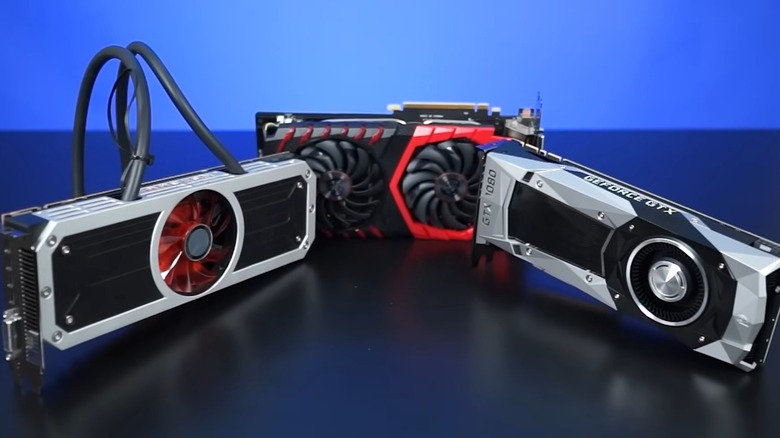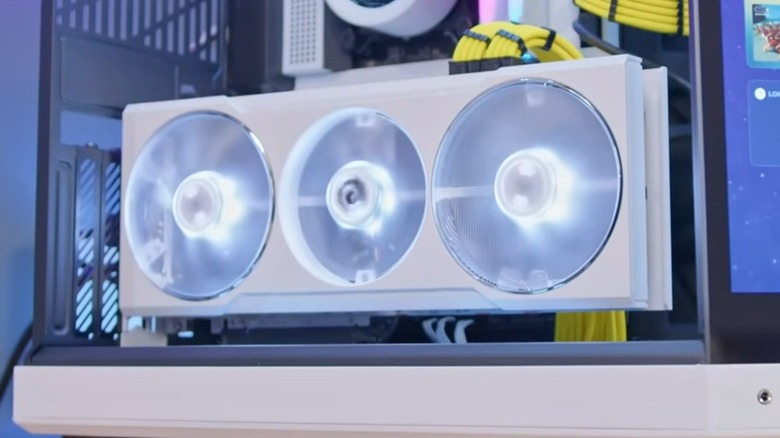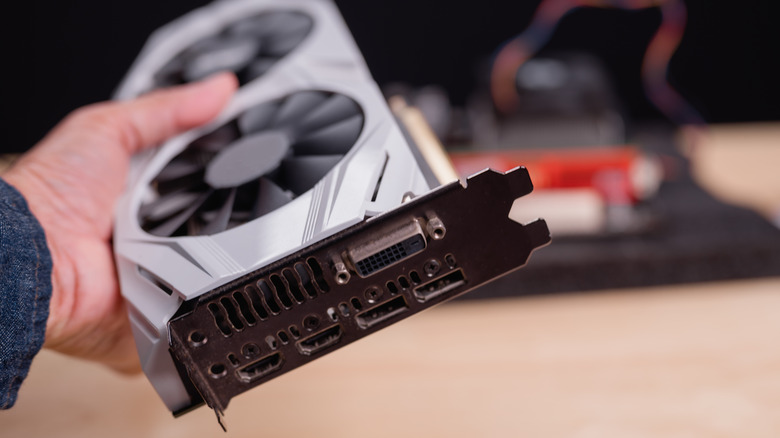Worried About How Long Your Graphics Card Will Last? Here's What Can Affect Its Lifespan
These days, computers are designed to handle far more than simple emails and calculations. In the modern era, they can pull off anything from film and TV streaming to the creation of complex digital art. Not to mention, gaming has become a major reason why folks spend upwards of thousands of dollars on top-of-the-line PCs. Of course, a modern computer is only as good as its components. One that makes a significant impact in PC construction circles is the graphics card, which is responsible for displaying clean, high-resolution images on your monitor while streaming, gaming, and more.
Naturally, with the advancement of PC technology and the increasing popularity of PC gaming and streaming, graphics cards have undergone significant improvements. There are currently some seriously powerful graphics cards for gaming PCs and other units on the market, but how long are you likely to get out of one? The average graphics card will stick around for between three and five years with routine use, though there's no specific number to that, as the lifespan depends on various factors. Factors such as the cooling capabilities of your PC, how often and how hard they're used, how often maintenance is performed, and the brand of the card in question can impact the use time you get out of them.
To maximize your GPU's lifespan and ensure smooth performance, there are several steps you can take to maintain it.
What does graphics card maintenance look like?
To some, it might be easy to completely forget about the graphics card. After all, it's not often that most folks crack their laptops or PCs open to get a look around, so graphics card maintenance might not seem a priority. In reality, it should be, at least if you don't want to get stuck replacing it more often than you should typically have to. One of the keys to preserving a graphics card is proper ventilation and air flow. Not only does this ensure the adequate cooling of components prone to overheating, but it can also dislodge debris that would otherwise get stuck in the fans. Still, it's a good idea to routinely remove dust buildup and the like, as this can trap heat and cause long-term damage.
Keeping consistent and clean air moving around your graphics card is only part of the cooling battle. Ensuring your thermal paste and thermal pads are working effectively and replacing them as necessary is also crucial. Thermal paste and thermal pads tend to last several years, but if you notice your device has increased in warmth or experiences full-on overheating, replacement is likely needed. Luckily, choosing the right thermal paste for your PC, as well as the right pads, isn't too hard. Additionally, keeping your PC's drivers up-to-date, maintaining a consistent and sufficient level of power to your device, and avoiding overclocking — pushing the graphics card beyond its default limits — can all help keep this key component around for the long haul.
As helpful as all of these steps are, there will inevitably come a day when a graphics card replacement is the only option. Fortunately, in most cases, handling such a swap yourself isn't much trouble.
How to install a new graphics card when the time comes for replacement
After years of good use, your PC's graphics card will inevitably need to be replaced. When this happens, you can turn to the best and worst of the major graphics card brands, determining which unit is the right one for you, your use habits, and budget. Once you've got your new graphics card in hand, in addition to an appropriately-sized screwdriver, you can get to work taking out the old one and installing its successor.
1. Turn off and unplug your PC.
2. Open your PC, allowing you access to your current graphics card.
3. Unplug your graphics card and remove any screws holding it in place.
4. Carefully pull the graphics card out of the PC. If it won't budge, there may be a small latch somewhere on it that needs to be released so the card can come out.
5. Line up the new graphics card and carefully push it into place.
6. Screw it into place, plug it in, and close up your PC.
That's just about all there is to replacing your old graphics card. After these steps, power up your PC and test the new card out, making sure everything is plugged in correctly and that it's operating as it's supposed to. As long as you follow the aforementioned maintenance tips and use it responsibly, you should get plenty of time out of your newly installed unit.


